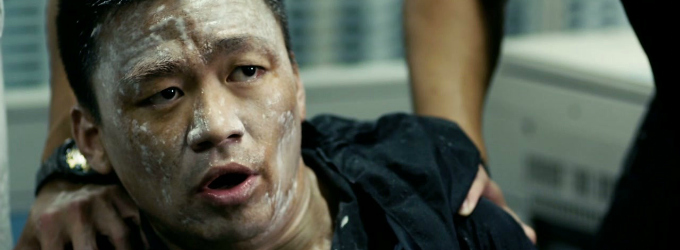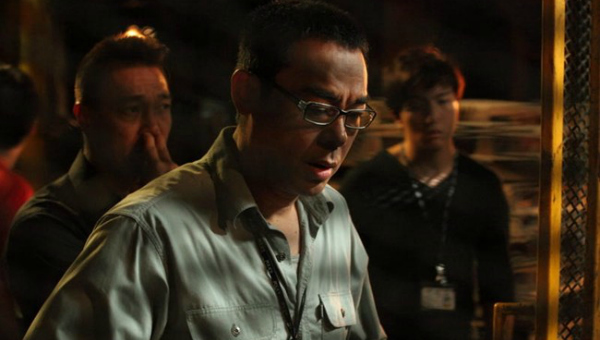 Their detractors dismiss the Pang brothers, Danny and Oxide, as one-trick ponies whose forays into Hong Kong horror and crime have taken a downward spiral since their excellent supernatural thriller THE EYE (2002). Oxide originally worked as a colourist and Danny’s specialty is editing – which makes the apparently hasty stitching together of his latest solo project, FAIRY TALE KILLER, all the more confusing. It’s hard to say whether Danny Pang is experimenting, or whether this diluted offering is the result of interference from Eastern producers – cf. UNMADE IN CHINA.
Their detractors dismiss the Pang brothers, Danny and Oxide, as one-trick ponies whose forays into Hong Kong horror and crime have taken a downward spiral since their excellent supernatural thriller THE EYE (2002). Oxide originally worked as a colourist and Danny’s specialty is editing – which makes the apparently hasty stitching together of his latest solo project, FAIRY TALE KILLER, all the more confusing. It’s hard to say whether Danny Pang is experimenting, or whether this diluted offering is the result of interference from Eastern producers – cf. UNMADE IN CHINA.
In any case, FTK’s brand of psycho-horror feels at least ten years old. The soundtrack smacks of 90s Playstation shooters; the villain’s style is art college goth; the moral dilemma forced on the hero very Joker or Jigsaw. The saturated scarlet lakes, umbers and oxide greens are trite; the furious crayon imagery a familiar visual trope. Elanne Kwong is cast as the villain’s mute sidekick, and she is yet another Sadako (RINGU) clone, with a river of black hair, a white nightie and not much to do beyond the scribbling of expressionist art attacks across every available space. Subplots stumble into one another, and musical stings are defused and repeated until they almost form a steady rhythm, driving the strange story to its muddy conclusion.
… he sounds like Zippy from Rainbow, rants like Mister Punch and acts like Billy the Puppet from SAW.
The Chinese title of the film translates as “Pupil”, which puts a whole new slant on the story. The English word is Roman in origin and relates to orphans and wards. The bad guy of FTK, Wu Zai-Jan (Baoqiang Wang) grew up in an orphanage, begged on the street and spent time in a mental institution from which he escaped. As an adult, he now has the cunning and the funding needed to furnish a high-tech lair and plot creative revenge against his erstwhile wardens; before luring Police Inspector Han into a didactic trap. The killer has cast the authorities as the villains of the fairy tale, leaving as his Charles Manson-style calling card the Chinese symbol for “wolf” written in bloody red paint.
But how did he get to this stage? We’ll never know. We’re even confounded in our expectations of a lingering, salacious goggle at each of his murderous set-pieces: you could blink and miss a couple of them. Zai-Jan is as inexplicable as the killer in BLACK CHRISTMAS, and yet he gets a lot of screentime – he sounds like Zippy from Rainbow, rants like Mister Punch and acts like Billy the Puppet from SAW. And what is a pupil if not a puppet? Zai-Jan grew up as a ward of the state, was driven to extremes by a society which rejected him and seeks revenge on the men and women at the orphanage who should have offered him love, protection and guidance.
Is he painting by numbers, or sketching out a new line in horror?
A parallel is drawn between Zai-Jan and Inspector Han’s little son. Han (Ching Wan Lau) knows that his son, who exhibits severe learning difficulties, will never follow in his footsteps – and so he neglects his duty as a father. Early on in the film, he is established as a morally flawed cop as well as a bad dad. Scenes of his family life could almost be mistaken for the villain’s back-story: Zai-Jan and his companion style themselves as a modern-day Hansel and Gretel. Even the film itself is the bastard son of four writers and a thousand pulp 90s forefathers. And yet it still has the delicate, feminine flourish that drew us all to THE EYE: that early hit that raised the bar so high, and which keeps us so loyal despite the twins’ diminishing returns. The horror homages form a backdrop to the scattered twists of symbology, subtle stylistic quirks and exquisite compositions that remind us we’re in the hands of a Pang. A lightbulb-changing scene echoes the near-hanging in THE EYE; drips of Zai-Jan’s spermy face paint, on the carpet at the police station and in the grass at a crime scene, embed themes of self-fulfilment, paternity and duty of care; a clever closing camera angle casts us as a forsaken outsider. What is Danny Pang trying to do here? Is he painting by numbers, or sketching out a new line in horror? It’s hard to say, but it’s also hard to accept a Pang as a pupil and not a pioneer.
FAIRY TALE KILLER will be released on DVD on 7 October 2013. Click here to pre-order.
DVD Special features:
– Interview with Sean Lau
– Making Of
httpvh://youtu.be/48dwF4bvS98

